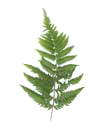



|

|

|
Many great inventions have resulted from really simple ideas. Some so simple, that you have to wonder why it took so long for someone to come up with the idea. You may even at times wonder why you did not come up with the idea yourself. While most (almost all) of us do not become famous for our ideas, we never the less all probably do come up with some useful ideas over our life times. Sharing these ideas with others, should contribute significantly to, "A better life for all".
On this page I would like to share some of the ideas I have come up with over time, that have made something, or some process, better, easier, simpler, faster, cheaper, or whatever. Hopefully these ideas will also prove to be useful to someone else as well. Naturally I would also welcome and acknowledge contributions and / or corrections and suggestions that would lead to improvements in the ideas listed here. While the idea for this page came about before I discovered the book, The World's Greatest Idea: The Fifty Greatest Ideas That Have Changed Humanity, it would be remiss of me not to recommend it to you.
The first two "Handy Hints" are dedicated to my two sons-in-law, and celebrate the two very good ideas I picked up from them.
Pierre Delport - A better join for electrical flex or cables: For years I would strip the pair of neutral wires (blue insulation) and twist the two corresponding sections of exposed copper wire together. If I was concerned about the possibility of this relatively weak join being pulled apart during the subsequent use of the joined cables, I would also solder the respective joins before enclosing them using insulation tape.
When I watched Pierre do it, using the lives (brown insulation}, he first split each of the respective sections of copper wire into two, as shown in ![]()
He then twisted the corresponding separate halves,from each of the brown cables together, as shown in ![]()
After that he twisted the separately twisted sections of the brown cables together as shown in ![]() . This obviously creates a much stronger join and probably removes the need for the join to be soldered, should there be a concerne about the strength of the join.
. This obviously creates a much stronger join and probably removes the need for the join to be soldered, should there be a concerne about the strength of the join.
Andrew Sheard - A neat needle for stitching shade-cloth: This contribution really should be titled, " 'n Boer maak 'n plan! ", which loosely translates into, " a Farmer makes a plan! ". These plans always involve "Bloudraad en 'n tang". Again, translated that would mean, " galvanised 8 gauge wire and a pair of pliers".
![]() shows shows a close-up of the shade cloth needle constructed from a piece of "bloudraad" (galvanised eight gauge steel wire). First a length of bloudraad was cut with the tang (pair of pliers). Then the hammer and anvil was used to beat the one end of the wire into a flat section large enough to accomodate a hole for the stitching twine. Finally the hole was drilled and a file and sand paper was used to remove burrs, round off the other (not sharp) end of the needle, and generally make the needle more presentable. It worked very well
shows shows a close-up of the shade cloth needle constructed from a piece of "bloudraad" (galvanised eight gauge steel wire). First a length of bloudraad was cut with the tang (pair of pliers). Then the hammer and anvil was used to beat the one end of the wire into a flat section large enough to accomodate a hole for the stitching twine. Finally the hole was drilled and a file and sand paper was used to remove burrs, round off the other (not sharp) end of the needle, and generally make the needle more presentable. It worked very well
![]() shows the basic frame for a veggie enclosure I am building.
shows the basic frame for a veggie enclosure I am building. ![]() shows the plundered broccoli.
shows the plundered broccoli.
![]() shows one of the veggie patches with the frame in place. Monkeys love broccoli and cauliflower. The don't touch cabbage. Who would have guessed? They also do not like raw onions, tomatoes, spinach, and of course, rhubarb.
shows one of the veggie patches with the frame in place. Monkeys love broccoli and cauliflower. The don't touch cabbage. Who would have guessed? They also do not like raw onions, tomatoes, spinach, and of course, rhubarb. ![]() shows shows a close-up of the frame housing broccoli and brussel sprouts.
shows shows a close-up of the frame housing broccoli and brussel sprouts.
If you are viewing this page and know of a "Handy Hint" that is not already described, you are encouraged to submit your "Handy Hint". Also do not feel you should restrict yourself to a single hint. If you feel you can improve an already described Handy Hint", please communicate your improvement.

|
|
[email protected] |
|
|
Google+ | www.robdempster.com |
|

|